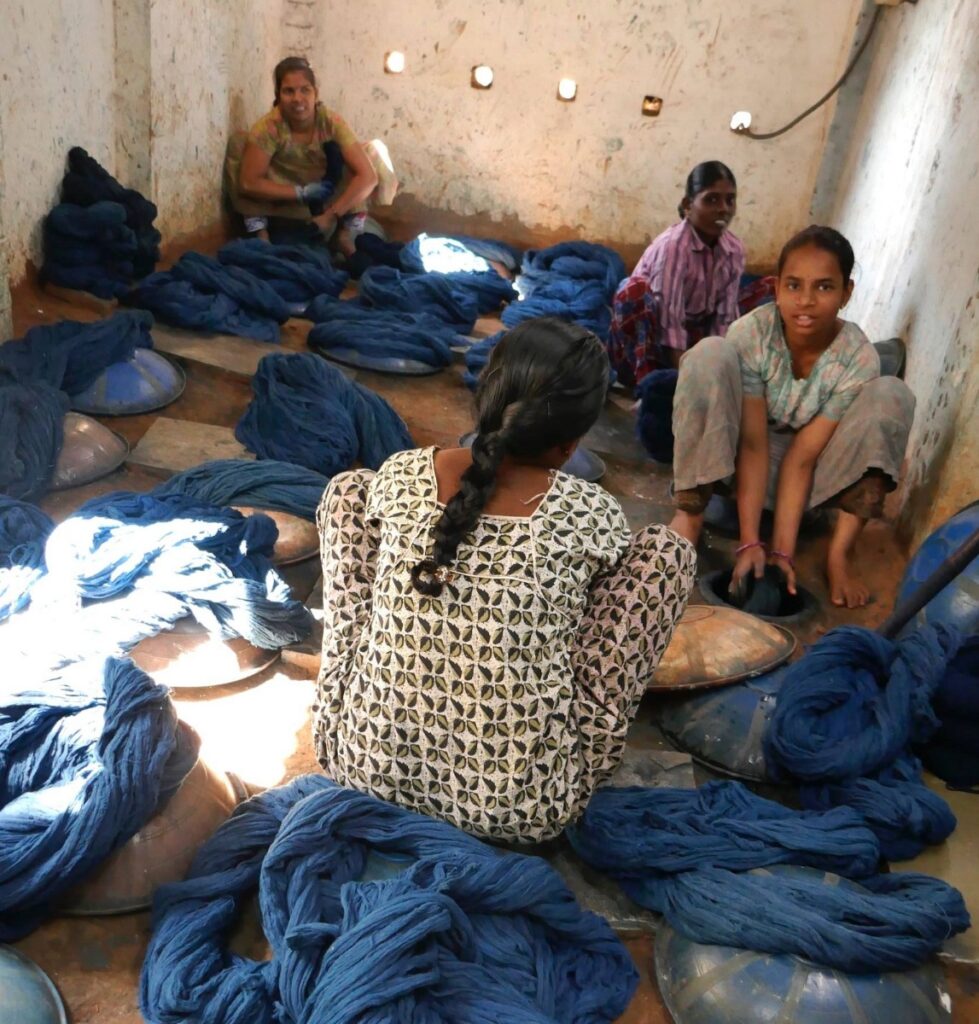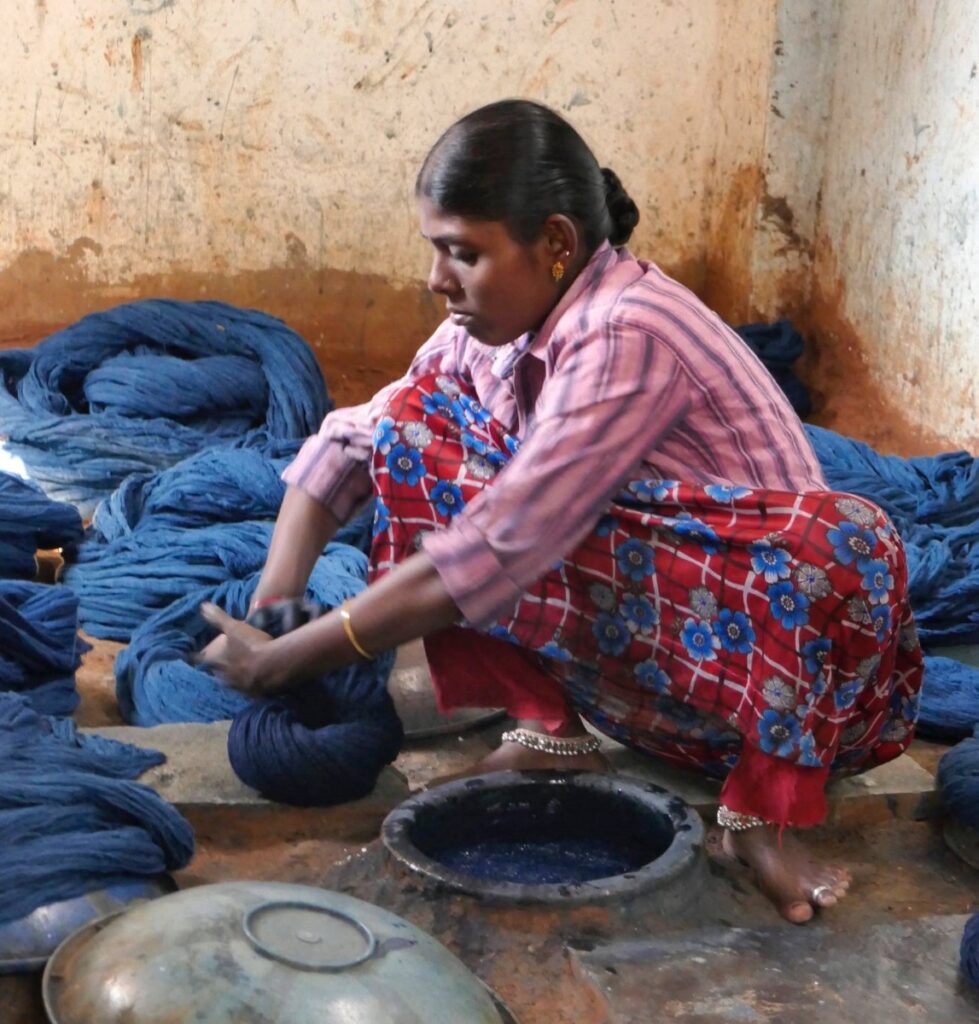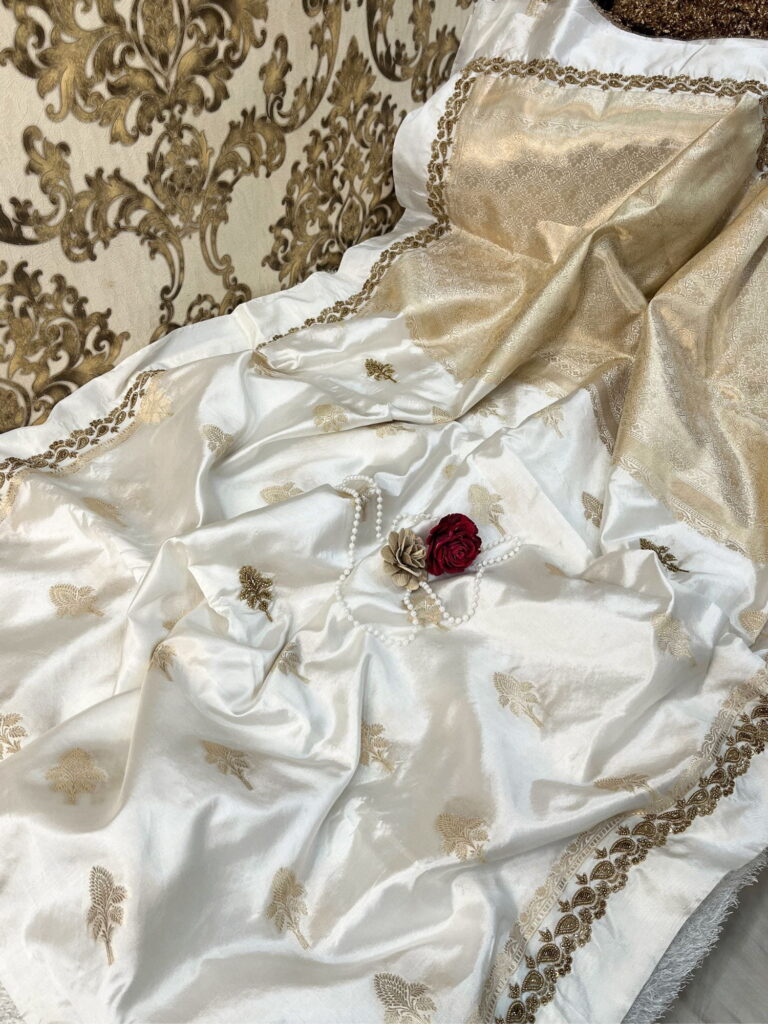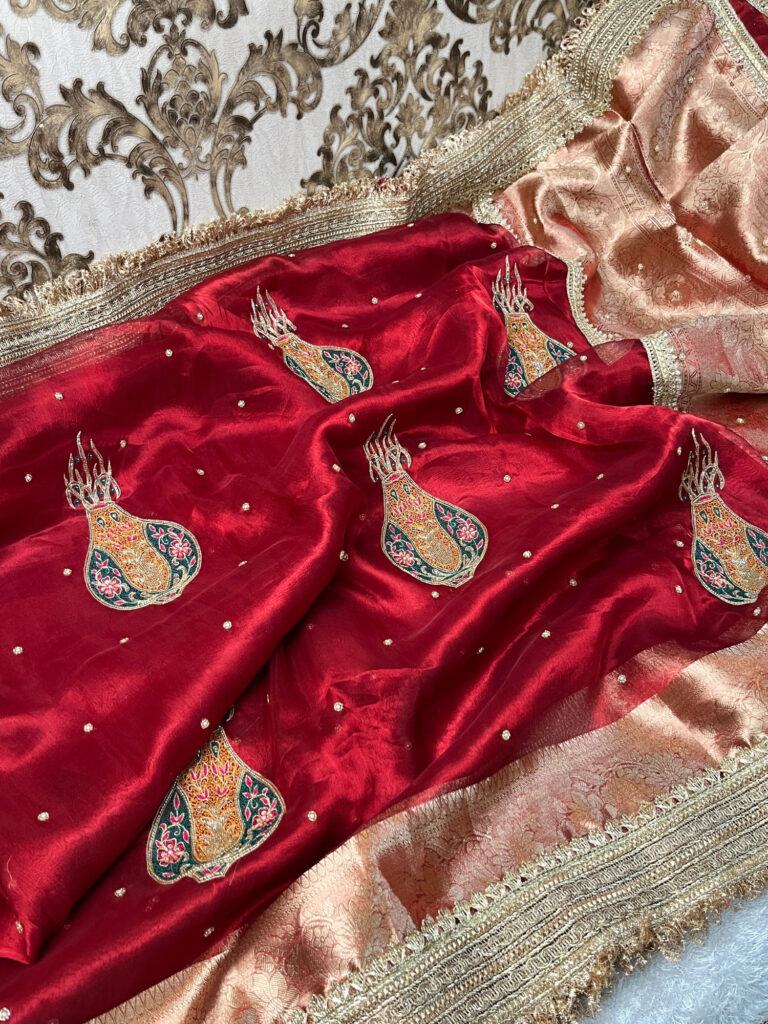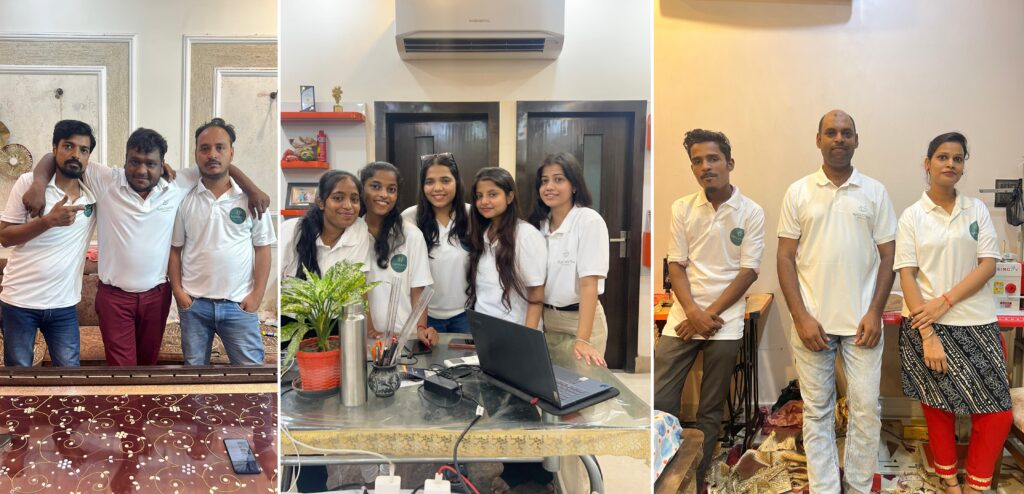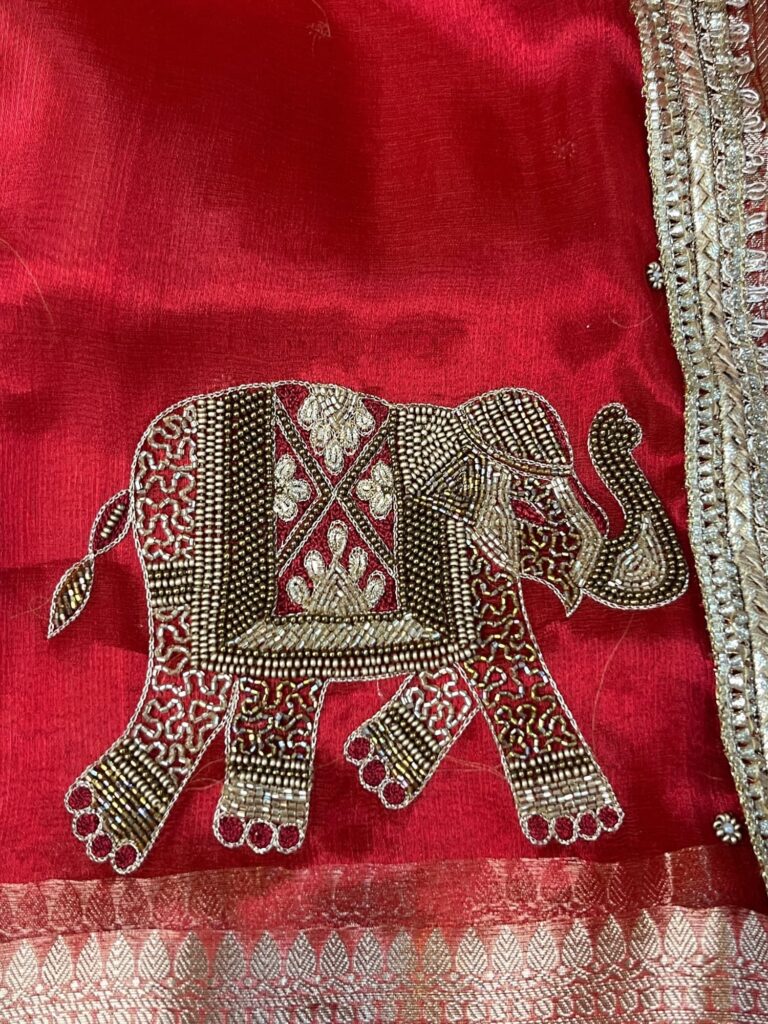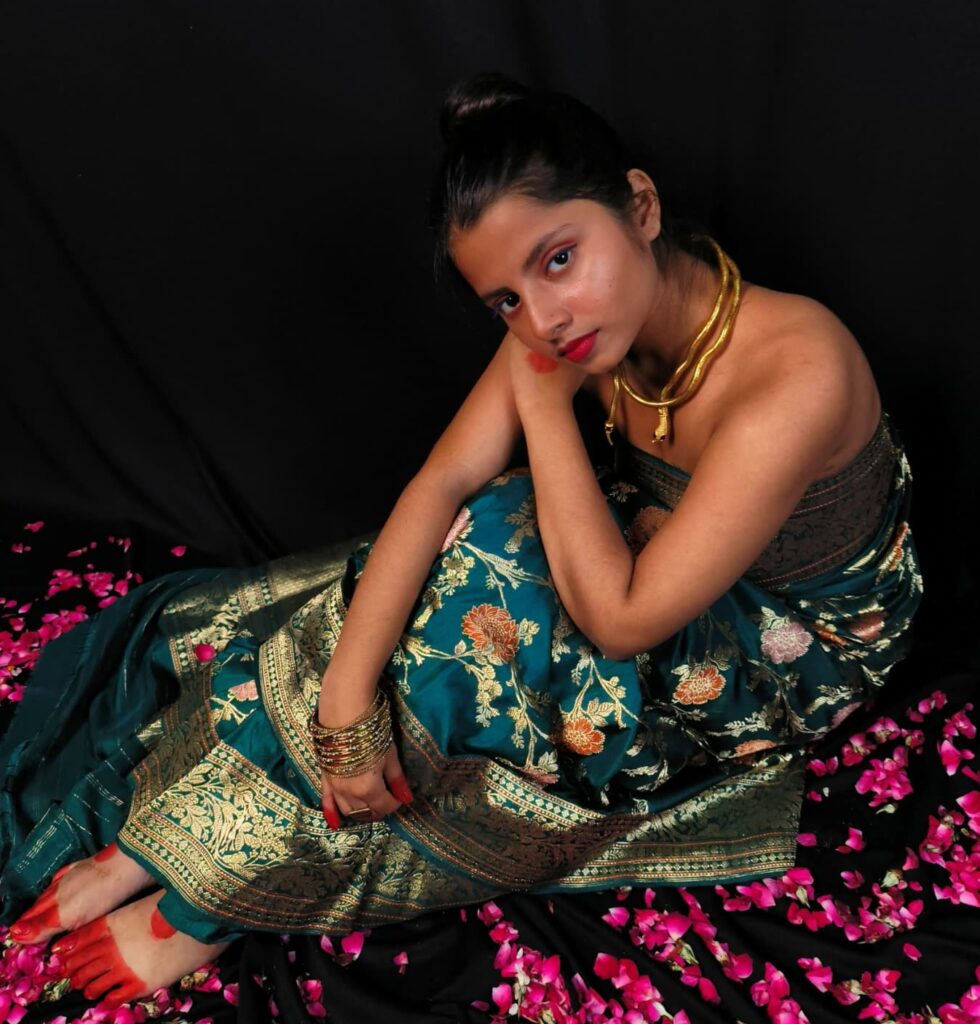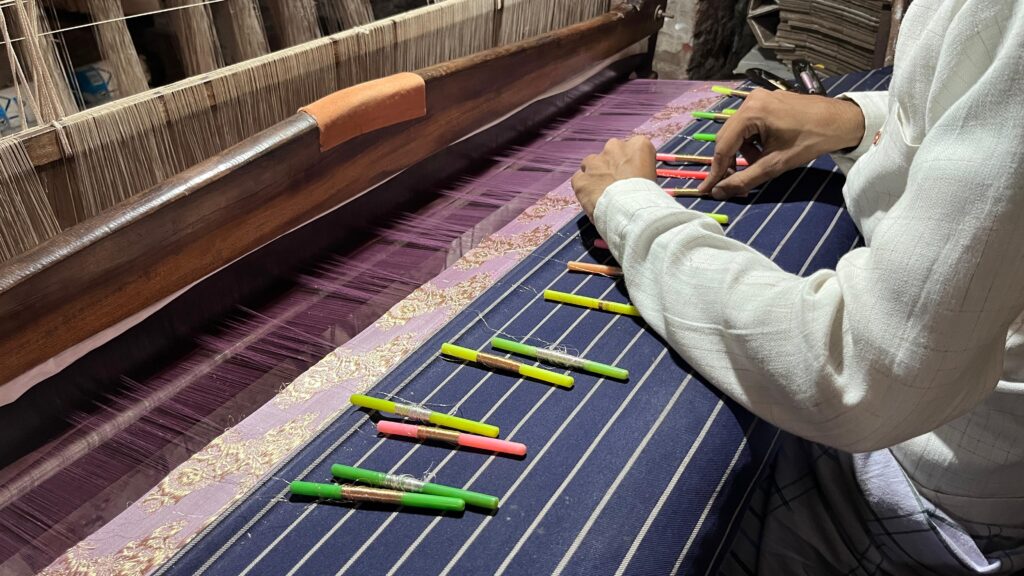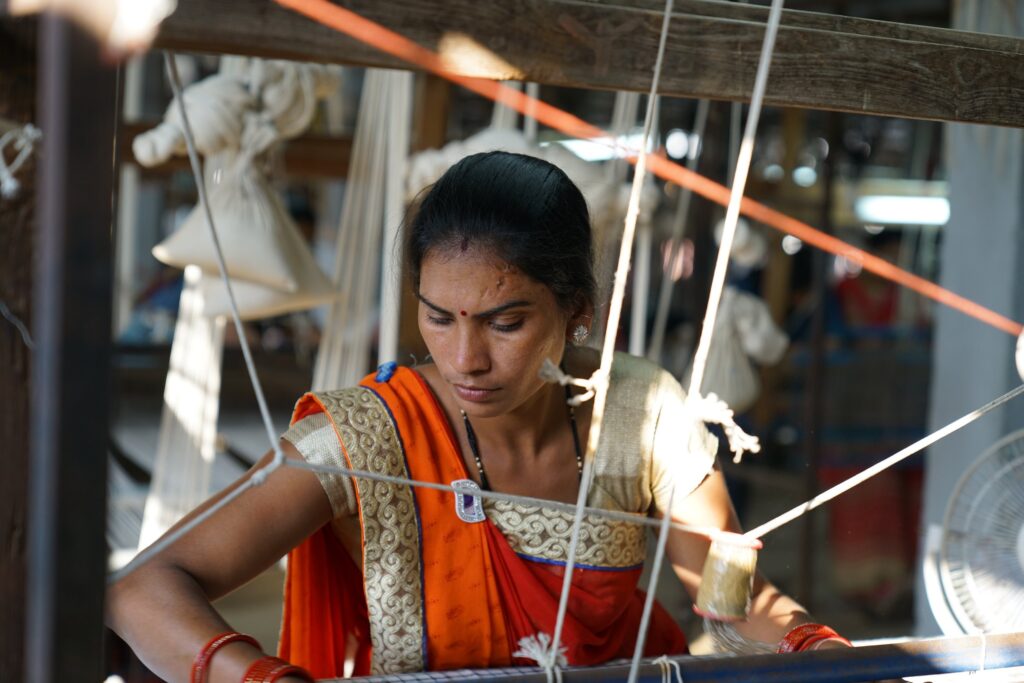
Who Gets the Credit? The Invisible Women Behind Banarasi Saree
Every time someone drapes a Banarasi saree, they carry a piece of Varanasi’s soul. The silk, the zari, the motifs, they speak of centuries old tradition and painstaking artistry. But behind the glamour of wedding mandaps and designer lookbooks, there is an untold story. One that rarely makes it to the tags or showrooms.
A story of the invisible women behind Banarasi sarees. Women Artisans, women dyers, women weavers, and female hand-embroiderers whose handwork goes unpaid, unseen and uncredited merely because of their gender and roles as wife, daughter, or sister born or married in the families of the artisans.
The Myth of the Lone Male Weaver
Walk into a typical Banarasi showroom, and you’ll hear praises sung for “Ustaads,” master male weavers. They’re undeniably skilled, but to reduce the creation of a Banarasi saree to one pair of hands is to erase the many others that shape it long before it reaches the loom and even after it leaves.
The truth is a Banarasi saree is rarely the product of one artisan.
And often, it’s a woman’s hands, silent, unpaid, unseen, that do the essential foundational work.
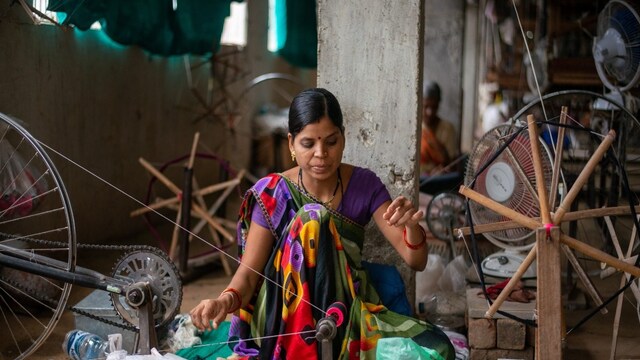
Unpaid Labour, Unseen Effort: What Women Do
Here’s what most people don’t know:
- Thread Preparation
Before a single motif is woven, raw silk needs to be boiled, dyed, dried, and spun into thread. This is often done at home, by wives, mothers, daughters without any separate wage.
- Bobbin Winding
Weaving requires winding hundreds of small bobbins. This repetitive, delicate task is done by women sitting for hours, often balancing household chores alongside.
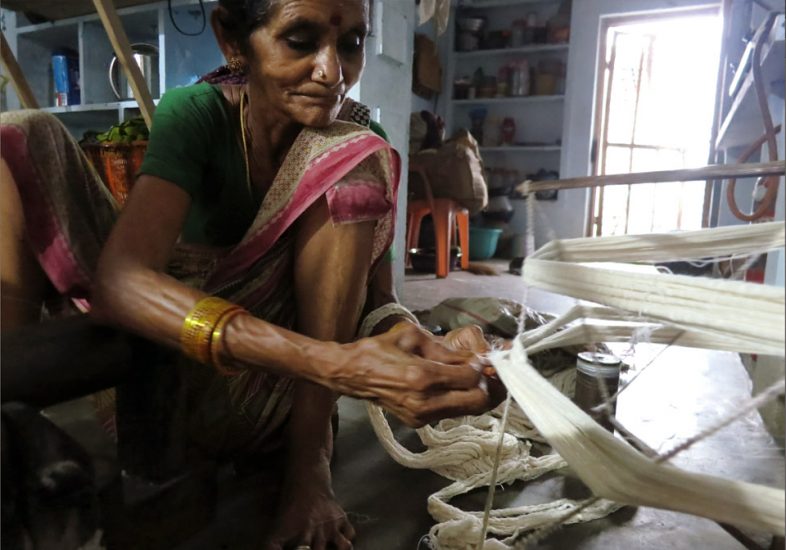
- Jala Making (Design Frameworks)
While the design ideation may be led by men, the painstaking tying of jala (the pattern coding threads for jacquard looms) is often a shared family task and women participate fully, often without formal recognition.
- Dyeing & Washing
In smaller setups, women are involved in preparing dye baths, monitoring color intensity, and washing sarees post weaving, all while managing domestic duties.
- Finishing Work
Trimming threads, folding sarees, removing loose fibers, starching, and packing. Women handle these finishing touches that give a saree its final grace.
- Embellishment & Handwork
Hand embroidery (zardozi, gota, appliqué) is often subcontracted to women in home-based units who juggle low pay with high expectations.
The Gendered Injustice of Credit
Despite their integral involvement, women in the Banarasi ecosystem are rarely credited as ‘weavers’ or artisans. They’re referred to as “helping hands”, not as craftswomen.
Their names don’t appear on labels.
Their work is not considered “skilled.”
They are almost never part of weaver cooperatives or direc t to market programs.
They don’t qualify for most government artisan schemes or awards.
Even when a saree wins a National Award, it’s almost always a man who walks on stage. But the invisible scaffolding behind that masterpiece may have been a woman working in silence.
Why Does This Happen?
The reasons are deeply entrenched:
- Patriarchal workshop structures that don’t recognize women’s contributions as formal labor.
- Domestic invisibility: women often work from home, blending their roles as wives/daughters with their roles in saree production.
- Lack of documentation: very few women artisans are registered.
- Cultural conditioning: where craft knowledge is seen as a ‘duty,’ not a profession, when passed to women.
What Needs to Change
For Banarasi sarees to truly honor their heritage, they must honor every hand that touches them. That includes the unrecognized women behind the scenes.
Here’s what we, as brands, buyers, and citizens, can do:
- Credit women artisans openly. In product descriptions, photoshoots, blogs, tell their stories.
- Pay fairly and transparently. Especially for women doing dyeing, winding, or finishing work.
- Support women led weaving clusters. Many NGOs now work with all women looms back them.
- Train & upskill women. So they can move from “assistants” to master craftswomen.
- Challenge patriarchal ownership of craft. Art has no gender. Only talent and labor.
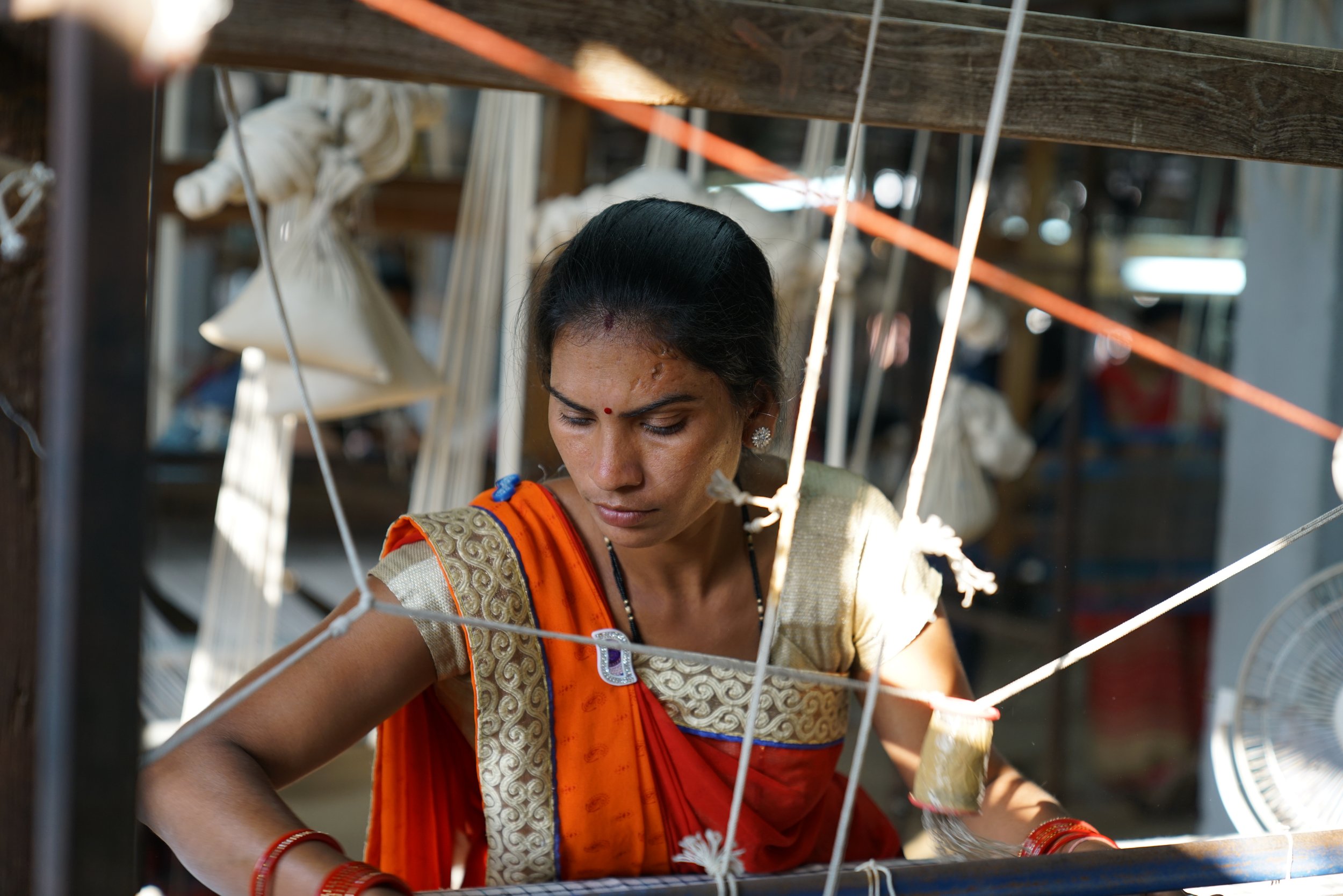
What We’re Doing at Mantavya Banaras
At Mantavya, we’re on a journey to build a more ethical, inclusive, and respectful craft ecosystem. We work directly with weaving families and we make it a point to speak to the women as much as the men.
When we document a saree’s journey, we include every hand that touched it. From the girl who dyed the silk to the mother who finished the fall and pico stitching.
And in the future, our vision is to create employment hubs exclusively for women artisans, where they lead and not follow.
The Saree You Wear Carries More Than Design
It carries dignity. Labor. Invisible fingerprints.
Next time you drape a Banarasi saree, pause for a second.
Not just to admire its sheen, but to think about the many women who made that sheen possible without ever stepping into the spotlight.
Let’s give them the credit they’ve long deserved
Join the Movement
Want to support women weavers? Follow us, share their stories, and choose ethically made sarees from platforms that respect every artisan, not just the ones in front of the loom.
Check out some amazing women weaver stories:
https://www.photographerswithoutborders.org/online-magazine/women-weaving-futures

